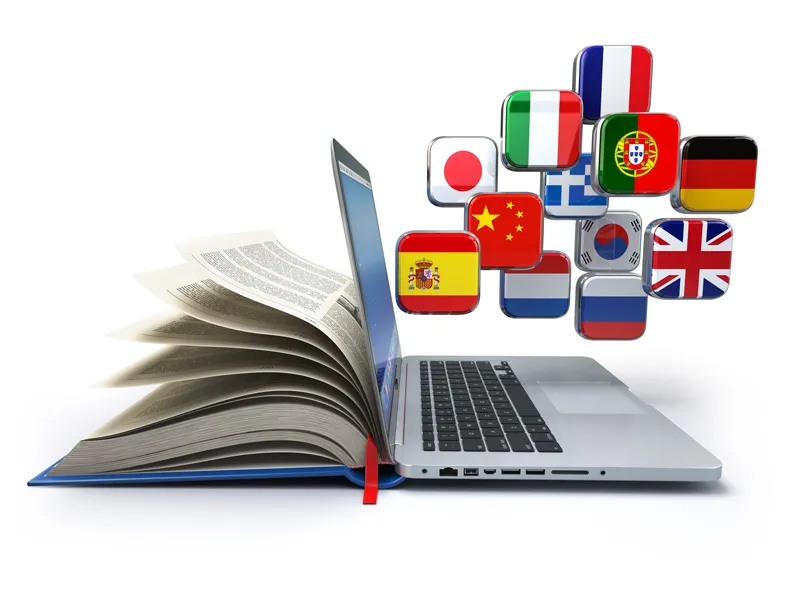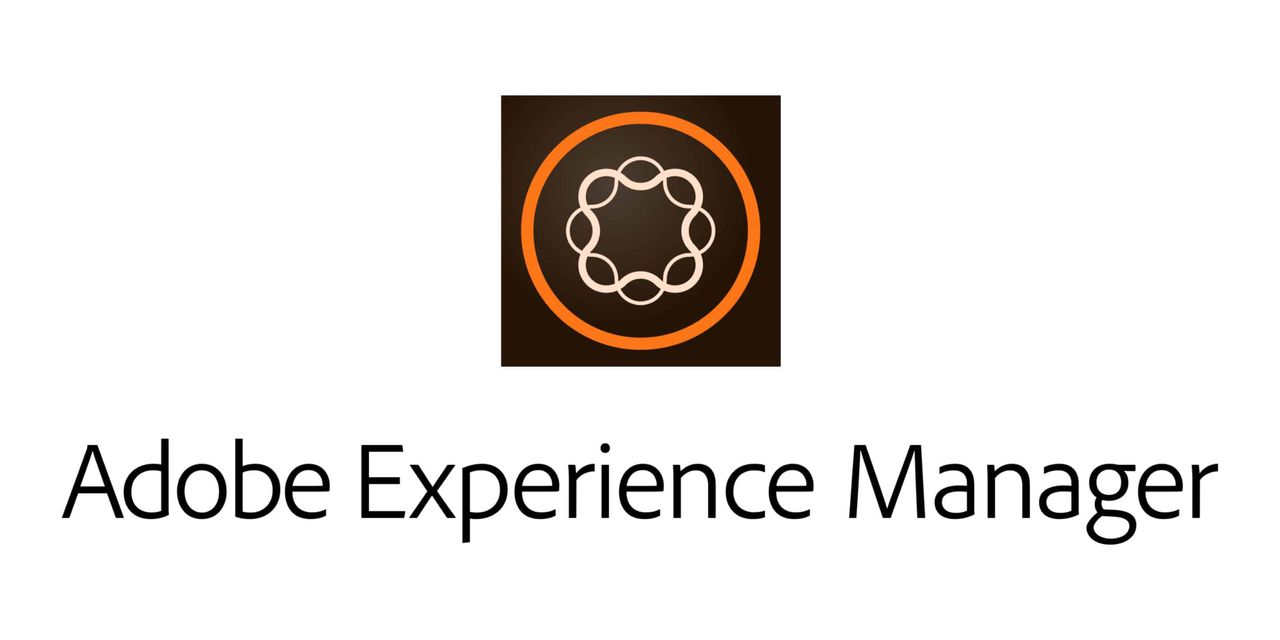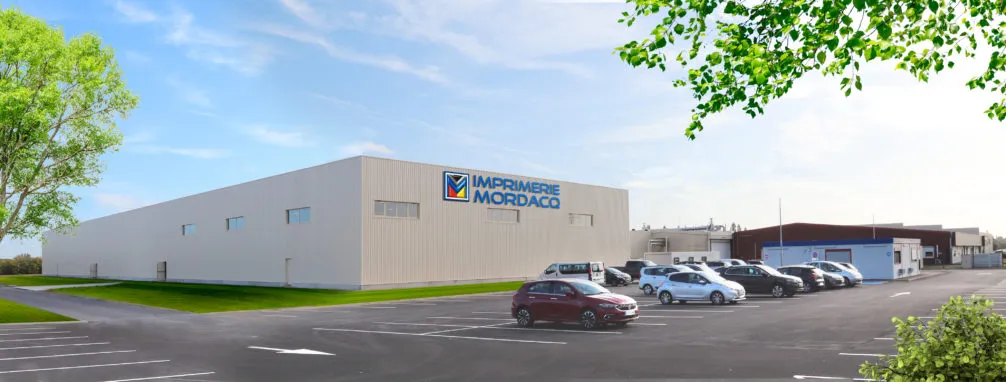The Bespoke Agency works internationally with prestigious brands, and it is in this context that it was asked by its client LG to implement a solution dedicated to the translation process of technical product catalogs.
The catalogs are translated into 15 languages each year, while users in each country must not only translate but also check and correct the published characteristics, as well as validate the pages; over 10,000 pages annually.
The source documents (the masters) are Adobe InDesign files edited by LG.
After examining different options and alternatives, the Bespoke Agency decided to rely on J2S Simple Workspace. There were many reasons for this choice, including:
Simple Workspace is a cloud and Wysiwyg solution, accessible without installation or plugin in any country;
Translators can immediately see the rendering of translated pages in a shared Flatplan in real-time;
The common will of all the teams to share in transparency around the project, initiated from the beginning between the Bespoke project manager, his counterpart at J2S, and the LG teams.
The time between the GO and the launch of production for more than 50 users in 15 countries was quite short: 4 months. However, this timeframe was maintained because Simple Workspace is well adapted to the constraints of this type of process.
The workflow
The Adobe InDesign files in the native language are simply uploaded to the platform. At this point, the master document is visible as a flatplan. Additional work can be done to lock the blocks that should not be translated.
This master is automatically duplicated: one target per language. It is possible to add a target language at any moment. At the end of this phase, which is fast, we are left with 15 documents waiting to be translated.
When everything is ready, the workflows take over to indicate to the translators the pages that are ready to be translated. Translators have been identified and linked to the groups in charge of a language; this is how several translators can intervene for the same language, and it is possible to bring on board a new translator during production.
Translators are alerted by an e-mail containing links to the platform: this saves them having to navigate to find the pages of the flatplan concerned. They can also use the Simple Dashboard, which shows them the status of the project and offers them access to the pages, or simply browse through the pages.
Each page has a status that shows its status: to be translated, in translation, in proofreading, validated (multi-level validations), and at a more detailed level, each InDesign box can be translated. Note that this concerns both texts and images, as a translation operation can consist in replacing an image, which is easy with J2S Simple DAM.
The translation can be done directly in the interface with the mass translation tool, which shows on the left the visual of the page, and on the right the grid of texts: the source text, the translated text, taking into account the breaks in style. The visual is updated as the translations are completed, allowing the translator to appreciate the clutter of the translated text. The translator can also export the texts in an Excel document to perform the first translation outside the platform or use a third-party tool, then finalize in the interface.
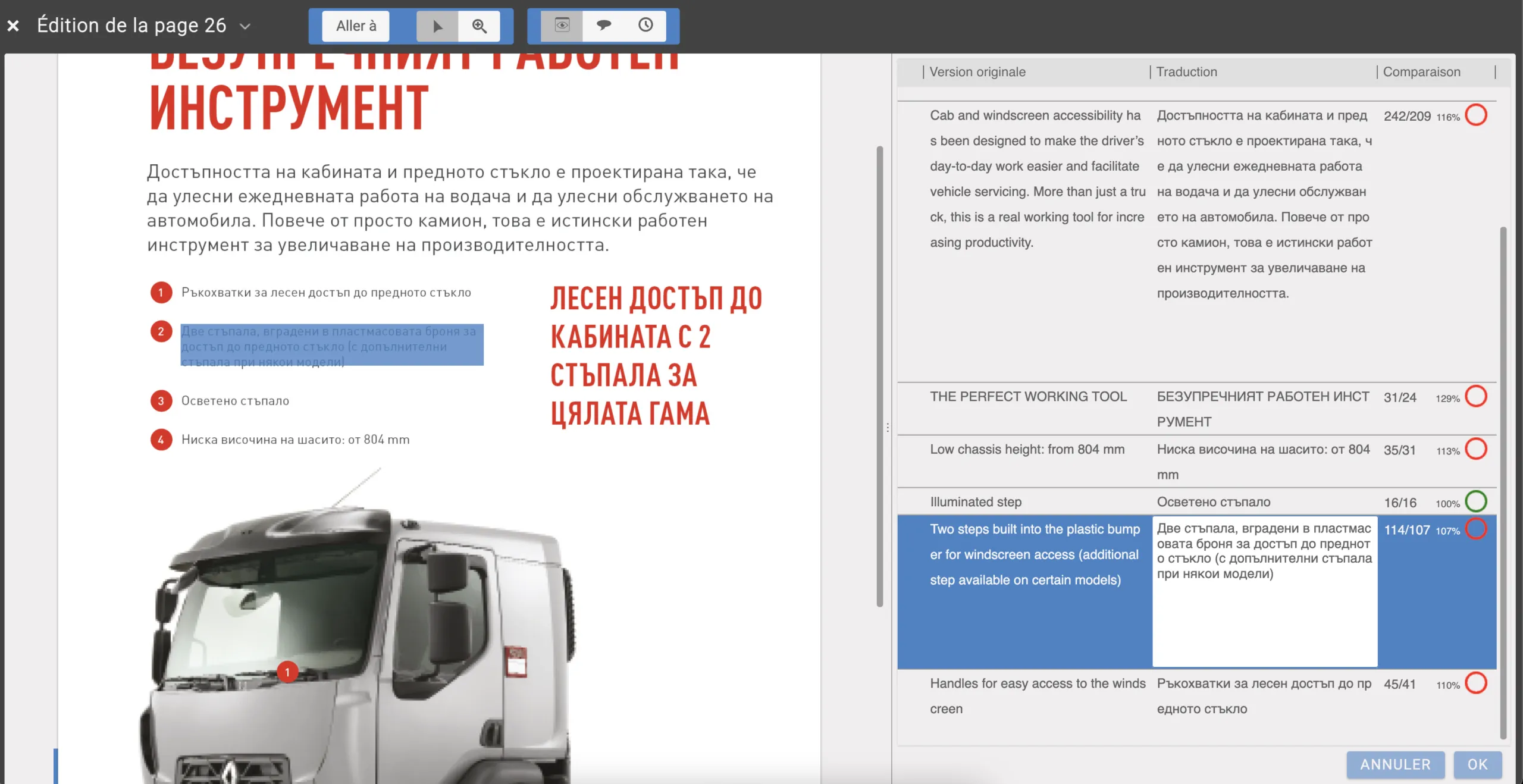
All pages are gradually translated, even by several translators, into the same target language without any risk of collisions. They can be exported at any time, in InDesign or PDF format.
Validations, comments
When a page is translated, the translator changes its status and the page is then submitted to the proofreader(s) concerned by the language. The proofreaders use the annotation tool to indicate any remarks they may have on the page, which are then used and closed when the page is proofread.
Consequently, a page can go back and forth several times before being validated.
If necessary (and authorized), the web2print tool even allows modifying the page directly through the browser, for example, to move or enlarge a box.
What if the master changes?
It can happen that during the process, an error is detected in the master, such as an incorrect characteristic value. This is where Simple Workspace becomes very effective: it is then possible to modify the master to correct the error and thus, not to find it again during the next publication.
The translators can be informed of the change to take it into account. Of course, this mechanism is not open to everyone, and it is used with care. It is also possible to correct the master for the next publication without impacting the current production.
The project
The project was entirely managed through video meetings, which allowed to open a flow of exchanges through which the teams shared and progressively mastered LG’s needs as well as the tool and its configuration, the use remaining simple and obvious.
The absence of technical constraints (no installation to be done, no plugin to be checked) allowed all the teams to focus on the functionalities and their configuration.
Finally
Simple Workspace is often mentioned for its ability to generate pages (catalogs, flyers, labels, magazines, books, etc.) from databases, and this is indeed one of its strong points.
Simple Workspace is also a very powerful and affordable tool for managing existing Adobe InDesign documents, whether to translate, validate, adapt or customize them.
D. Lantier
Business Developer
